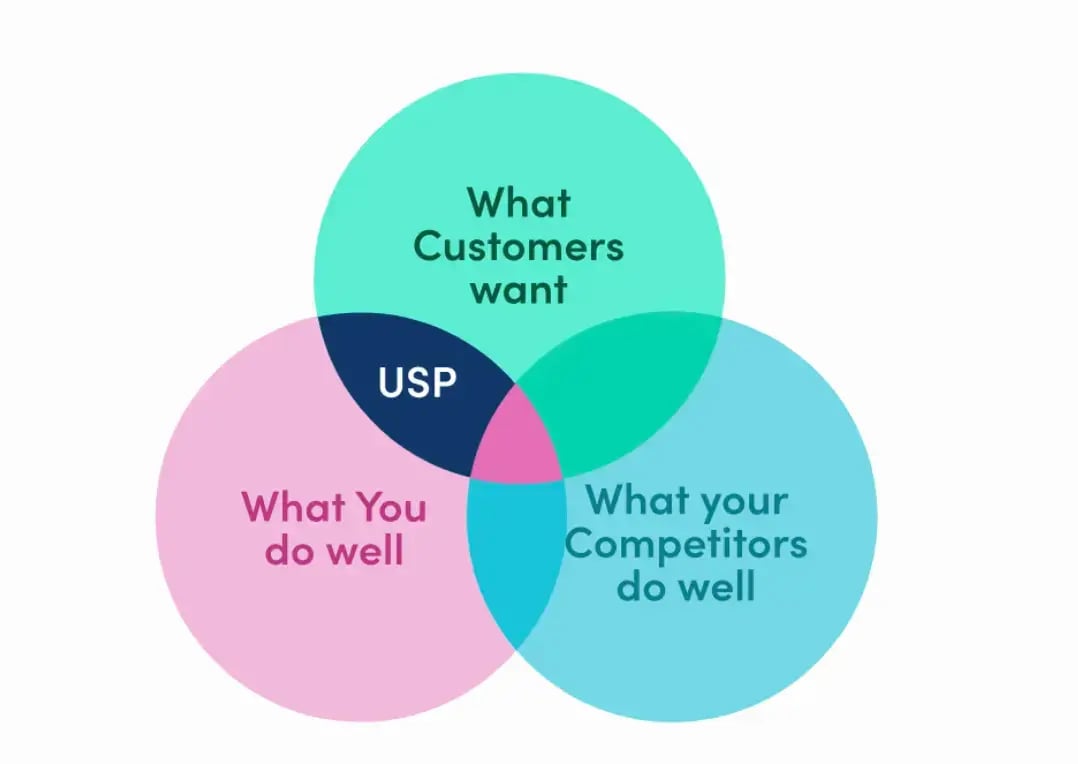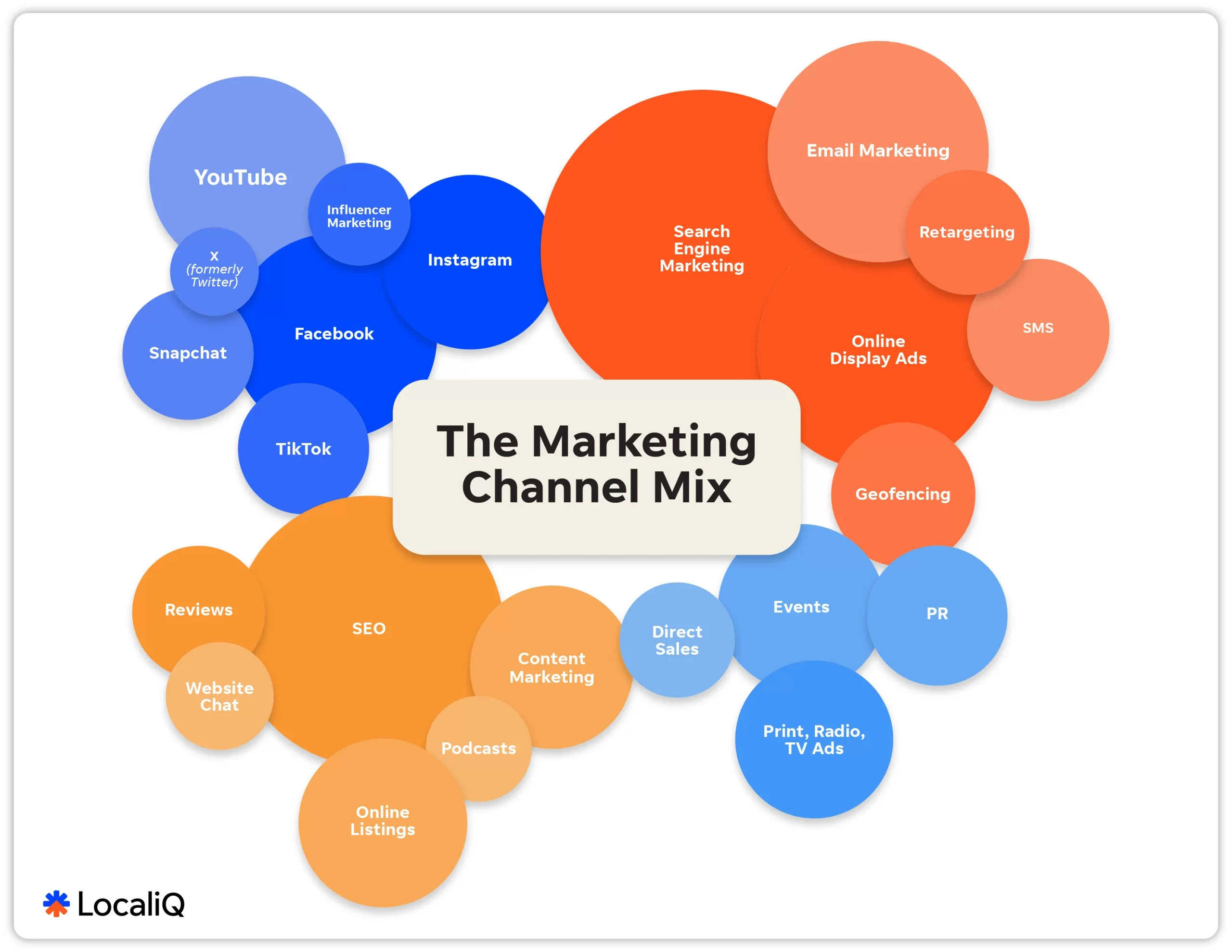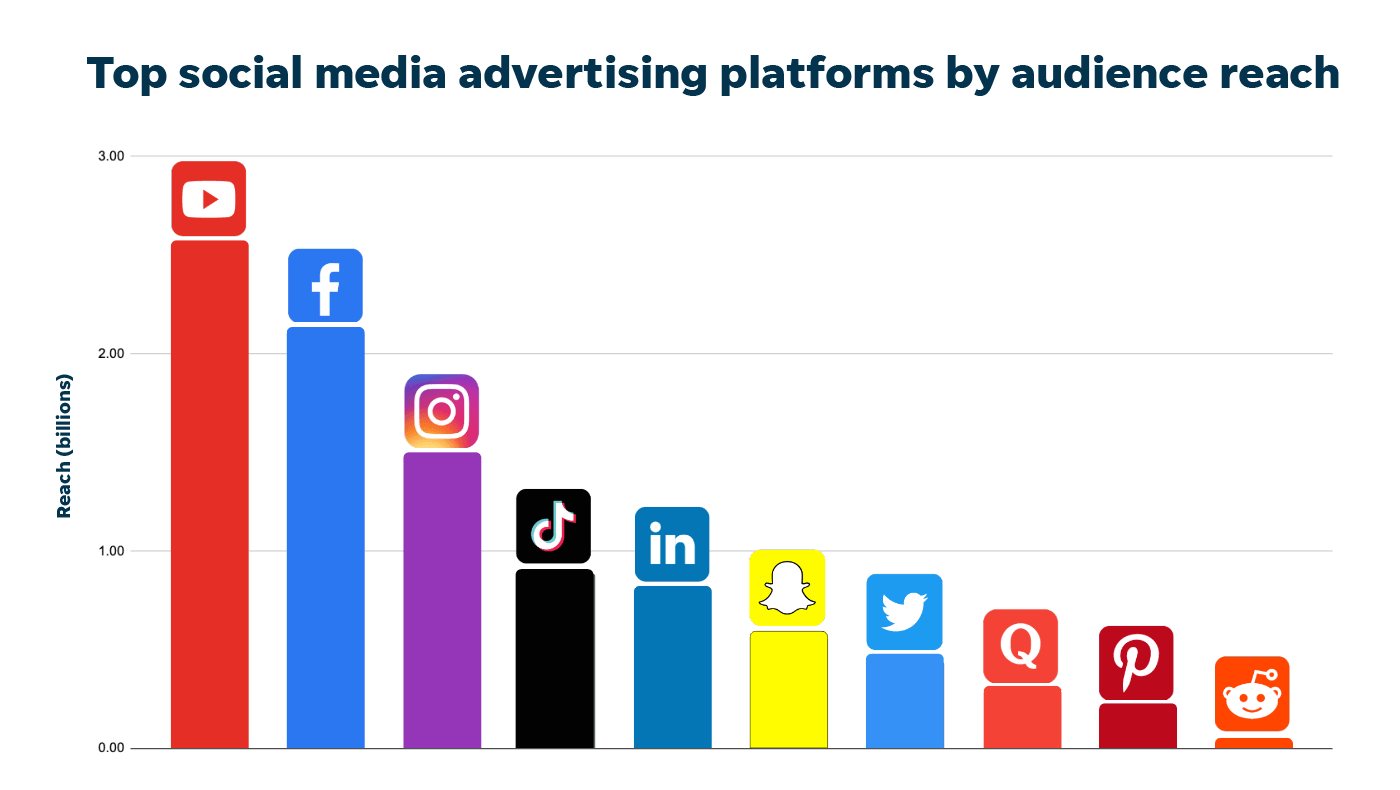In the dynamic world of online video marketing, where attention spans are shorter than ever, capturing viewer interest immediately is paramount. This isn't just about flashy visuals or catchy tunes—it's about understanding your audience's core needs and delivering compelling content that showcases your product's value. Get ready to unlock a comprehensive guide filled with actionable strategies and a deep dive into the tactics used by the most successful video marketing campaigns today.

Discover a step-by-step journey, uncovering the nuances of crafting compelling product demo videos that convert. Learn how to strategically leverage video ad formats to weave data-driven optimization tactics into your video content strategy, and elevate audience engagement through A/B testing. Whether you're just getting started or looking to elevate your existing campaign efforts, this comprehensive guide offers practical tools for achieving optimal results. Let’s make sure every second counts and every viewer converts.
Highlight the Problem Your Product Solves in the First 5 Seconds

Capturing viewers' attention immediately is crucial in the fast-paced world of online video advertising. Starting your product video ads by showcasing the pain point your target audience faces creates an instant connection and makes them more receptive to your solution. This emphasizes the relevance of your product and sets the stage for presenting its benefits as the answer to their problem.
Things to Plan:
- Conduct thorough research to understand your target audience's biggest pain points related to the product category.
- Develop a concise and visually impactful scene that depicts the problem effectively within the first 5 seconds.
- Consider using storytelling techniques to emotionally engage viewers with the depicted problem.
- Test different variations of the opening scene to see which resonates most effectively with your target audience.
Focus on Benefits, Not Just Features
While features are important, video content that simply lists them often fails to resonate with viewers. Instead, transform your product feature list into compelling benefits. Explain how each feature directly improves the customer's life or solves their specific problem. For instance, instead of saying """"Our software has a drag-and-drop interface,"""" you might say """"Our intuitive drag-and-drop interface saves you time and makes design easy.""""
Things to Plan:
- Identify the core features of your product and translate them into tangible benefits for your target audience.
- Develop concise and persuasive language that focuses on the """"what's in it for me"""" aspect for the viewer.
- Create visuals that demonstrate the benefit in action, not just the feature itself.
- User testimonials can reinforce how these features translate into real-world benefits for existing customers.
Weave a Compelling Narrative Around Your Product's Value Proposition

Effective video marketing goes beyond simple explanations. Engage viewers on an emotional level by crafting a story that connects them to your product's core value proposition. Think of your product as the hero of the story, resolving the conflict (customer pain point) and leading to a positive outcome. This approach helps your audience connect with your brand on a deeper, more memorable level.
Things to Plan:
- Outline a clear narrative structure that showcases the problem, introduces your product as the solution, and depicts a positive outcome.
- Identify key emotions you want to evoke and consider how you can visually and narratively elicit those responses.
- Ensure the narrative aligns with your brand personality and resonates with your target audience's values.
- Consider using relatable characters or situations within your narrative to enhance emotional connection.
Utilize Social Proof Through Testimonials and Reviews
Build credibility and trust by showcasing real people who have benefited from your product. Incorporate positive customer testimonials or reviews into your video ads to show potential buyers the real-world impact of your offering. These testimonials serve as powerful endorsements and help establish social proof, making viewers more confident in considering your product.
Things to Plan:
- Reach out to satisfied customers and request their participation in video testimonials (offering incentives where appropriate).
- Carefully select testimonials that showcase diverse demographics and perspectives relevant to your target audience.
- Ensure the testimonials are genuine, authentic, and focused on specific benefits achieved through using the product.
- Secure appropriate releases for using testimonials in your marketing materials.
Use Clear and Concise Language that's Easy to Understand
Technical jargon or overly complex language can create a disconnect with your audience. Instead, use simple and accessible language that anyone can comprehend. Clearly articulate your product's benefits and avoid any industry-specific terminology that might alienate potential customers. Keep your sentences short, your message direct, and your vocabulary user-friendly.
Things to Plan:
- Tailor your language to the specific level of understanding of your target audience.
- Write your video script as if you were explaining your product to a friend in simple terms.
- Utilize strong visuals to aid comprehension and reinforce key concepts (especially if you must introduce some technical aspects).
- Conduct internal testing of your script with colleagues or friends outside your industry for feedback on clarity and simplicity.
Incorporate visual storytelling to Showcase Your Product's Unique Selling Points

Go beyond simply stating facts and features. Use visual storytelling techniques to design narratives that effectively demonstrate how your product works and why it stands out. Consider engaging visuals like animations, demonstrations, and product comparisons. Use these visual elements to dynamically highlight your product's unique features and emphasize the specific problems it solves.
Things to Plan:
- Create a storyboard to visually outline the key scenes and elements of your video narrative.
- Consider the types of visual metaphors or analogies that might represent your product's key features and benefits.
- Choose visuals that align with your brand aesthetic and evoke desired emotions in your target audience.
- Experiment with various visual techniques to determine what effectively conveys the product's unique selling points in a clear and engaging manner.
Understanding the importance
Targeting the wrong audience wastes valuable resources and yields poor results. Understanding your audience’s specific needs allows you to create highly-relevant and targeted video ads.
Identifying core customer characteristics provides valuable insights for tailoring your hook, messaging, and creative elements for maximum impact.
Deep dive:
- Utilize market research data, customer surveys, and social listening tools to gain insights into your audience.
- Develop detailed customer personas that represent different segments within your target audience.
- Analyze competitor video ads and their engagement patterns to understand what resonates with similar audience profiles.
Creating a Hook That Captures Attention Within the First 3 Seconds of Your Video

With shrinking attention spans, capturing viewer interest from the very first second is paramount. Your hook is the opening moment that determines whether viewers will continue watching your video. Employ techniques such as bold visuals, surprising statistics, or intriguing questions to make those crucial initial seconds count. Consider the platform on which the ad will be shown and what style of hook is most likely to resonate within that specific context.
Understanding the importance
Viewers are constantly bombarded with online content, creating the need to cut through the noise and quickly communicate your value.
A strong hook immediately communicates your video's purpose and prevents users from quickly scrolling past your ad.
Deep dive:
- Analyze successful video ads from your competitors and note what makes their opening seconds engaging.
- Brainstorm multiple hook options for your video and then narrow down to those most relevant to your audience's pain points or aspirations.
- Test different hook variations during A/B testing to empirically identify which achieves the highest initial viewer retention.
Leveraging Emotionally-Driven Storytelling Techniques to Connect With Your Audience
Connect with your audience on a deeper level by using emotions to create memorable and impactful video ads. Consider what emotions are most likely to resonate with your target audience when considering your product or its benefits. These emotions can range from joy and excitement to empathy and trust. Craft a story that touches on these emotional themes, helping your message cut through the noise of competing product videos.
Understanding the importance
Emotional responses enhance viewer engagement and improve recall. Emotions drive decision-making and foster a connection to your brand.
Effective emotional engagement goes beyond traditional advertising; it focuses on connecting with people and forging a bond.
Deep dive:
- Conduct surveys to better understand the underlying needs and emotional motivators behind your audience's interest in your product category.
- Develop characters and situations that reflect common emotional states or aspirations your audience members can readily connect with.
- Consider employing emotive language, relatable scenarios, and strategic visual elements to amplify your video's emotional impact.
Experimenting With Different Hook Styles (e.g., humor, intrigue, problem/solution) to Identify What Resonates:
![]()
When designing a hook, consider employing several styles and strategically choose based on the specifics of your product and audience. For instance, humor can be highly effective but might be unsuitable for more serious products or niche audiences. On the other hand, a problem/solution approach directly addressing the viewer's pain points might work well across diverse audiences and product types. Ultimately, thorough A/B testing with different hook variations is essential to determine the ideal hook that effectively resonates with your target audience and compels further engagement.
Understanding the importance
Audiences respond differently to different styles, necessitating a personalized approach based on target viewer demographics and psychographics.
Thorough experimentation and data-driven analysis ensures your video campaign launches with its strongest hook.
Deep dive:
- Define several core audience segments and consider which hook styles (e.g., humour, curiosity, empathy) align best with each segment's sensibilities.
- Explore different hook options that align with those audience segment profiles and their expectations of the video content type.
- Conduct A/B testing with clear and concise measurement criteria to track each hook variation's ability to improve key metrics like initial view-through rates.
Personalizing the Hook Based on the Platform and Placement of Your Video Ads
Optimize your video ads for the specific environment in which they'll appear. For example, a fast-paced, action-packed hook might perform well on social media feeds where viewers have short attention spans. Alternatively, on YouTube, a more comprehensive problem-solution approach in your hook might be well-received because viewers often expect informative content on that platform.
Understanding the importance:
User behaviours and content consumption patterns vary considerably across platforms and within specific platform environments.
By personalizing the hook for each unique ad placement you create relevance and increase the likelihood of engagement.
Deep dive:
- Analyze engagement patterns (video click-through rates and drop-off rates) of similar video content from competitors across different platforms.
- Tailor the opening sequences and creative aspects (graphics, text overlays) of your video ad to be more engaging and aesthetically fitting within a specific platform’s unique environment.
- Incorporate elements of interactivity into platform placements that support such features (e.g. clickable end cards, polling) to enhance video ad effectiveness and conversion opportunities.
Utilizing User-Generated Content as a Powerful Hook to Showcase Authenticity
Begin your video by featuring positive reviews or experiences from real customers to create instant trust. When someone authentically vouches for your product, potential customers immediately feel a stronger sense of reliability. Using user-generated content demonstrates that your product does deliver the promised results and often leads to higher conversion rates.
Understanding the importance:
User-generated content evokes a sense of authenticity, something often missing from traditional product ads.
Positive peer reviews create a strong sense of validation and overcome buyer reluctance in making purchase decisions.
Deep dive:
- Actively seek positive product reviews or testimonials from your customer base. Offer incentives to those willing to create short videos or share their positive experience in written formats for potential inclusion in your ads.
- Obtain written permissions and consent before re-purposing any customer content for your video advertisements.
- Consider utilizing user-generated content as both a compelling hook and as testimonials woven through other sections of your video ad to boost its trustworthiness and enhance its conversion potential.
Seamlessly Integrating Product Demonstrations within Your Video's Narrative
Instead of just telling viewers about your product, show them its effectiveness. If your product solves a problem, demonstrate that solution in action within a clear narrative framework. Use high-quality visuals to guide the viewer through a realistic scenario that accurately depicts how your product can bring positive results to their daily life or professional workflows.
Understanding the importance:
"Show, don't just tell" is a foundational marketing principle. Actively demonstrate how the product works to enhance engagement and establish credibility with your claims.
Practical examples bring clarity and help viewers visualize themselves utilizing the product for similar advantages.
Deep dive:
- Identify common ways users might interact with your product within the context of achieving desired benefits.
- Script and plan visually captivating demonstrations for your product video ads to clearly and efficiently show viewers what your product does.
- Craft short and concise video scenarios that showcase multiple benefits within the context of your product demonstrations, but ensure the visual story flow is kept straightforward and easy to follow.
Creating Scenarios That Highlight the Practical Applications of Your Product

Provide clear and concise demonstrations that vividly showcase how users can effectively utilize your product in a variety of realistic and relatable situations. If you're promoting software, show viewers how it helps them complete specific tasks faster or more effectively. The key is to use scenarios that mirror your target audience’s potential experience with your product.
Understanding the importance:
The how does this impact me? question is at the core of viewer engagement. Practical demonstrations resonate effectively.
Product applications must align closely with your identified target audience's interests and workflows for maximum impact.
Deep dive:
- Study user demographics and usage habits to better understand typical real-world contexts where your product will be implemented by your customer base.
- Develop practical product application examples through collaborative brainstorms or market research initiatives to ensure you are highlighting what matters most to your target audience.
- Employ storytelling techniques to create compelling micro-narratives surrounding your product’s utilization to elevate engagement and deepen connections with viewers.
Using Before-and-After Sequences to Visually Demonstrate the Impact of Your Product

This technique powerfully showcases the positive effects your product has by comparing the situation """"before"""" using the product and the desired results """"after"""" implementing it. For instance, before-and-after visual storytelling can clearly illustrate cleaning results for a household product or showcase the difference in workflow productivity before and after adopting software. This visual approach visually emphasizes the transformational effect of using your product and builds a powerful argument in its favor.
Understanding the importance:
The contrast within before-and-after content creates visually strong video advertising capable of conveying compelling value propositions within seconds.
Humans are innately receptive to change visualized within narratives and perceive this content as visually digestible proof that your product makes a measurable difference.
Deep dive:
- Determine the most visually effective before-and-after example you can produce based on core benefits that differentiate your product from competitors within the market.
- In cases where visual differences may be challenging to convey through a live-action video presentation, consider the creative use of infographic sequences or animated comparison elements.
- If before-and-after sequences heavily inform your campaign content you might benefit from deploying various sequential ads each showcasing unique transformations with each transition highlighting how your product is facilitating change and growth for its users.
Leveraging Screen Recordings or animated explainer Videos for Complex Products
Simplifying complex features of products, especially within the world of software or online service, can be greatly aided by employing animation or visual methods of step-by-step guidance.
Understanding the importance:
Screen recordings provide visual aid and direct insight into how a product actually works or solves specific challenges.
Animation brings the story of your product and its value to life, providing flexibility in showing things that might not be easily replicated with live footage.
Deep dive:
- Invest in high-quality software screen-capture tools that ensure your recording and final presentation outputs look sharp and are compatible with all your intended video platforms for deployment.
- Utilize concise on-screen graphics and typography effectively when creating animated explainers as these can highlight key steps within the user-experience process or help guide users on how to navigate specific interfaces, if applicable.
- When developing such content, consider multiple audience personas and knowledge gaps. Always assume users might need to familiarize themselves with your product before encountering an ad, therefore keep all explainer content approachable for those with little existing awareness of what your product can do.
Focusing on One Key Benefit Per Video Ad to Avoid Overwhelming Viewers

In an era where viewers can instantly move onto new video content or simply close out of a poorly conceived ad, it is essential to focus each piece of marketing output with laser-precision. Instead of attempting to include every great thing about your product in a single video ad keep things lean. Pick one key feature and corresponding benefit per advertisement.
Understanding the importance:
Effective video ad campaigns build brand awareness or drive product engagement across several video deliveries. Trying to convey too much too soon only dilutes your overall messaging strategy.
Clear calls-to-action can only be effective when the viewer is presented with a clearly focused message on what that one specific product does for them as a first-time user.
Deep dive:
- Create a content matrix for all potential video topics based on unique and individual benefits your product has to offer various target segments within your intended viewer base.
- Consider scripting different video ads showcasing each core product benefit to specific target audiences, further personalizing both what the core value prop is and the format of the content itself to suit that ideal user demographic.
- As part of a comprehensive multi-video campaign rollout, ensure each new benefit video either subtly references the previous video ads through brief visuals, repeated typography themes, or through direct mentions in your script, helping viewers see the wider capabilities of your product as they experience more video messages within your planned delivery.
Addressing Common Objections or Concerns Related to Your Product Head-On
Within each video ad dedicated to promoting a core product feature, briefly address potential customer anxieties. For instance, concerns about price, long-term usage costs, or onboarding training timelines can be quickly assuaged through upfront and honest disclosures or mentions in the script.
Understanding the importance:
Consumer behavior shows significant improvements in conversions for those who believe anxieties about usage are taken seriously by those making or promoting the product in question.
When people feel like their natural anxieties about trying a new product are preemptively recognized they are far more likely to trust a product advertisement and make a move to exploring your offering in greater depth.
Deep dive:
- Deploy keyword listening or analytics reports related to conversations surrounding your product category or product to discover recurring user concerns (e.g. frequent feature requests from competitors that you also fulfill or concerns users express over subscription versus flat-purchase product models).
- Actively cultivate open discussion through social media to invite conversation and hear more anxieties surrounding your product category which might then inform scripting during future advertisement productions.
- Ensure any objections are addressed naturally within your video ad’s narrative to avoid disrupting your intended tone or aesthetic style; prioritize addressing user concerns at moments that directly relate to the benefit being demonstrated or clarified.
Developing a Content Calendar for Consistent Video Ad Production and Deployment

Creating a structured video content calendar ensures your product stays top-of-mind by delivering fresh content to your audience regularly. This helps you establish a reliable rhythm for your video ads and maintain momentum in your marketing efforts.
Things to Plan:
- Content themes: Identify core themes and topics that align with your product and audience interests.
- Video formats: Diversify your content with a mix of explainer videos, testimonials, demos, and behind-the-scenes content.
- Publishing schedule: Set a consistent publishing schedule that is realistic for your team and caters to your audience's consumption habits.
- Platform distribution: Decide which platforms (e.g., YouTube, Facebook, Instagram) are best suited for your target audience and video formats.
- Campaign goals & KPIs: Align your video ad content with specific marketing objectives (e.g., brand awareness, lead generation).
Establishing Key Performance Indicators (KPIs) for Measuring Video Ad Success
Effective video marketing hinges on clear and measurable goals. Establishing relevant KPIs provides a roadmap for your video ad campaign, allowing you to objectively measure its impact and make data-driven adjustments for ongoing success.
Things to Plan:
- Brand awareness KPIs: Track metrics like reach, impressions, and brand mentions to measure your video ad's visibility.
- Engagement KPIs: Analyze watch time, likes, comments, and shares to understand how well your video content resonates with the audience.
- Lead generation KPIs: Monitor click-through rates (CTR), landing page visits, and form submissions from your video ad campaigns.
- Conversion KPIs: Measure sales, subscriptions, or desired actions directly attributable to your video content marketing.
- ROI measurement: Establish a system to track the cost-effectiveness of your video ads and optimize spending based on returns.
Repurposing Existing Video Content for Different Platforms and Formats
Maximizing video content ROI often means extending the lifespan and reach of your existing assets. Clever repurposing allows you to adapt high-performing video content to resonate with different audiences and thrive on various social media channels.
Things to Plan:
- Platform-specific adaptations: Edit videos to meet platform requirements (e.g., aspect ratio, length) for optimal delivery on YouTube, Facebook, Instagram, and LinkedIn.
- Format transformations: Turn a longer product demo video into a series of shorter teasers or convert customer testimonial videos into impactful social media snippets.
- Blog and article integration: Embed existing videos within your blog posts or articles to enhance content marketing efforts and provide valuable visual information.
- Email marketing campaigns: Utilize video thumbnails within email newsletters to drive traffic back to your website or landing page featuring the full video.
- Content refresh strategies: Update older, evergreen content with fresh visuals, new statistics, or updated call-to-actions to keep them relevant and engaging.
Creating a Library of Evergreen Video Assets That Can Be Used Across Campaigns

Evergreen content refers to video production that remains relevant and valuable for an extended period, offering consistent utility across multiple campaigns and marketing initiatives. This helps build a solid foundation of versatile product video resources that you can rely on.
Things to Plan:
- Product explainer videos: Create comprehensive tutorials demonstrating the core features and benefits of your software product.
- Customer testimonial videos: Capture authentic stories from satisfied customers, highlighting how your product has solved their problems and addressed their needs.
- FAQ videos: Address common questions and concerns about your product through concise and engaging videos.
- Brand story videos: Craft compelling narratives that highlight your company's values, mission, and unique approach, connecting with the audience on an emotional level.
- How-to and educational content: Provide valuable tips and insights related to your industry or product niche, positioning your brand as a thought leader.
Staying Informed About Emerging Video Ad Formats and Trends to Maintain Relevance
The video marketing landscape is constantly evolving. Staying current with new formats and trends empowers your team to experiment with innovative storytelling techniques and capitalize on emerging audience preferences to maximize your video ad's impact.
Things to Plan:
- Platform algorithm updates: Stay informed about changes to platform algorithms (e.g., YouTube, Facebook) to ensure your video ad optimization remains effective.
- New ad formats: Explore innovative video ad designs like interactive videos, shoppable videos, and 360-degree video experiences.
- Creative trends: Pay attention to evolving trends in video aesthetics, editing styles, and storytelling approaches to keep your content engaging and modern.
- Audience consumption patterns: Analyze data to understand how viewer preferences for video content are changing (e.g., length, format, platform).
- Competitive landscape analysis: Regularly review what competitors are doing with their product video ads to identify opportunities and stay ahead of the curve.
Continuously Analyzing and Refining Your Video Ad Strategy Based on Performance Data
A data-driven approach is paramount for optimizing the performance of your video ad campaigns. Continuously analyzing key metrics and user feedback allows you to make informed decisions to improve targeting, creative messaging, and overall campaign effectiveness.
Things to Plan:
- Performance tracking dashboards: Establish dashboards to monitor essential video KPIs (views, CTR, conversions) across platforms.
- A/B testing framework: Implement a structured A/B testing plan to systematically test different creative variations of your video content marketing efforts.
- Audience segmentation insights: Leverage data analytics to understand your audience's demographics, interests, and viewing behaviors, then refine your video ad targeting for improved results.
- Campaign optimization sprints: Schedule regular intervals to analyze campaign data and implement adjustments based on performance insights.
- Feedback loops: Actively collect feedback from your audience through comments, surveys, and social media engagement to refine your video content strategy.
Segmenting Your Audience Based on Website Behaviour and Past Interactions
Retargeting is most effective when you personalize the ad experience. Segment your audience based on their specific interactions with your website. For example, users who abandoned their shopping cart could receive video ads highlighting the product they left behind and offering a limited-time discount (personalized product video ads). This ensures your video ad content remains highly relevant and compelling to each segment.
Things to Plan:
- Define key website actions to trigger retargeting campaigns (e.g., product page views, add to cart, sign-ups).
- Group users based on the depth of their engagement and their stage in the buyer's journey.
- Establish clear campaign objectives for each segment, such as brand recall, product consideration, or conversion.
Creating Video Ads That Address Specific Interests or Concerns Shown by Retargeted Users

Address user's concerns head-on. If a user visited a specific product page multiple times, the retargeting video can focus on in-depth product demos or comparisons with competitor offerings (product benefits in video ads). This type of targeted video ad design demonstrates you understand their needs and are providing value-driven information to aid their decision-making.
Things to Plan:
- Analyze website behavior data to understand the interests and challenges of different segments.
- Craft tailored messaging that speaks to the unique needs and preferences identified for each segment.
- Showcase testimonials from users who share similar interests to build social proof and encourage action.
Leveraging Sequential Retargeting to Guide Users Through the Sales Funnel
Sequential retargeting uses a series of video ads to guide potential customers through different stages of the buying process. For example, the first product video ad in the sequence might focus on building awareness, followed by another video focusing on key product benefits, and concluding with a special offer for first-time buyers (conversion). This creates a strategic and cohesive user journey.
Things to Plan:
- Map out a series of touchpoints to strategically re-engage users as they move closer to making a purchase.
- Vary video lengths and content focus at each stage: shorter ads for initial engagement and longer, in-depth demos at later stages.
- Measure drop-off rates at each stage and refine the sequence for greater impact and effectiveness.
Offering Exclusive Incentives or Promotions Within Retargeting Video Ads
Exclusivity and a sense of urgency can significantly motivate users to convert. For example, retargeting ads could include limited-time discount codes specifically designed for users who viewed a certain category of products or previously engaged with your brand on social media.
Things to Plan:
- Align incentive types with segment behavior and purchasing patterns.
- Clearly and prominently highlight the offer value within your videos (video ad conversion)
- Set defined redemption windows to encourage timely action.
Using Retargeting Video Ads to Increase Brand Recall and Strengthen Customer Relationships
Even if a user isn't ready to buy immediately, consistent, valuable video ads can keep your brand top-of-mind. By using customer data (personalized product video ads), you can showcase product recommendations or new feature introductions that align with a customer's past purchases or browsing history.
Things to Plan:
- Develop retargeting sequences for customers at different stages of their lifecycle (new, repeat, loyal).
- Create entertaining or informative videos that enhance the overall customer experience and position your brand as an authority.
- Consider including invitations to follow your brand on social media to further deepen your customer connection.
Conducting Keyword Research to Identify Relevant Search Terms for Your Product

By analyzing search queries, you can optimize your product video ads for keywords your target audience is using on YouTube. Effective keyword integration is fundamental to attracting the right viewers, who will then engage more and eventually convert (benefits of product video ads).
Things to Plan:
- Use YouTube's built-in keyword tool or other third-party SEO research tools.
- Brainstorm search terms related to your product, its category, competitors, and potential solutions it offers.
- Analyze competitor videos for successful keyword strategies.
Optimizing Video Titles, Descriptions, and Tags with Relevant Keywords
Ensure your video metadata, including titles, descriptions, and tags, contains the primary keywords related to your product video ad content. This optimization will help your videos rank higher in search results and appear as suggested content.
Things to Plan:
- Incorporate primary and long-tail keywords organically into video titles and descriptions (product video content).
- Include variations and synonyms of your target keywords to reach a broader audience.
- Maintain readability and clarity when incorporating keywords; do not overload descriptions to the point where they lose their appeal.
Creating Compelling Thumbnails that Entice Users to Click on Your Videos
High-quality, eye-catching thumbnails are crucial to entice users to click. Your thumbnail should give viewers a clear idea of what the product video offers. Use bold colors, relevant product imagery, or text overlays that create curiosity.
Things to Plan:
- Maintain consistent branding within your thumbnail design.
- Include high-quality images that accurately represent the video content.
- Consider A/B testing thumbnail designs to determine the most effective variations.
Utilizing YouTube Cards and End Screens to Drive Viewers to Your Website or Product Pages
Engage your viewers by including clickable elements like YouTube cards and end screens. These allow you to drive users from the product video directly to your website, specific landing pages (video ads conversion), social media channels, or other relevant online destinations.
Things to Plan:
- Determine the desired conversion path for each video (e.g., sign-ups, product purchases).
- Strategically time the placement of cards to coincide with relevant moments within your video.
- Customize calls to action for each card or end screen to improve click-through rates.
Promoting Your YouTube Channel and Videos Through Cross-Platform Marketing Efforts

Don't just rely on YouTube's algorithms. Integrate your video content within broader marketing activities. This includes sharing teasers or key moments of your YouTube videos on other social platforms, promoting them through your website blog (product video ads), and embedding them within email newsletters to engage with a broader range of potential customers.
Things to Plan:
- Develop a comprehensive cross-platform content calendar to create consistency in video promotions.
- Include YouTube subscribe links and call-to-action across all your online platforms.
- Consider paid ad campaigns to extend the reach of your YouTube videos beyond organic views.
Engaging With Viewers in the Comments Section to Foster a Sense of Community
Foster community interaction and encourage discussion. Respond promptly to comments on your videos and address viewers' questions directly (video content marketing). This approach fosters a stronger bond between viewers and your brand and can boost brand trust and authority.
Things to Plan:
- Dedicate time to actively monitor and respond to viewer comments.
- Ask open-ended questions in your videos to stimulate discussions within the comment section.
- Consider running comment contests or hosting live Q&A sessions to increase user participation.
Leveraging Programmatic Advertising to Automate and Optimize Ad Delivery
Programmatic advertising allows you to target specific user segments, optimize ad delivery and increase your return on investment. The key is using relevant user data and automating ad bids on multiple platforms and channels efficiently.
Things to Plan:
- Define your target audience parameters, such as demographic interests, device usage, and browsing history.
- Set a daily budget and bid limitations for campaign cost control.
- Choose appropriate demand-side platforms (DSPs) and explore different buying options.
Exploring Different Ad Platforms and Channels to Reach a Wider Audience

Extend your campaign's reach by including various relevant ad platforms, like Facebook, Instagram, LinkedIn, and others suitable for your target market (video ads campaign reach). Using different social media platform ad campaigns for video content increases audience outreach by leveraging native user segments.
Things to Plan:
- Analyze user behaviour data and match platform selections based on user segmentation insights (personalized video ads).
- Establish platform-specific campaign goals and KPIs for individual performance evaluations.
- Explore diverse ad format types based on platform specific best-practices (e.g., in-feed ads vs stories).
Utilizing Influencer Marketing to Promote Your Product Through Authentic Testimonials
Engage in influencer collaborations and harness their authentic voices to market your products. By having an influencer test and endorse your product within their video content, your brand automatically connects with their established followers and gains reach into niche market segments.
Things to Plan:
- Identify and thoroughly vet influencers that closely align with your target audience and brand values (video content marketing).
- Establish clear guidelines and metrics for deliverables from your chosen influencers.
- Promote influencer-generated product videos across your own social channels and website for wider impact.
Implementing a Multi-Tiered Campaign Structure to Address Different Stages of the Customer Journey
The approach includes strategizing video campaigns across stages - the awareness, consideration, and final conversion phases of your buyer funnel. Videos addressing each stage create consistent engagement with prospects, nudging them forward towards the desired purchase action (video ad content).
Things to Plan:
- Outline the objectives and specific calls-to-action (CTAs) relevant for each customer journey stage.
- Tailor video ad creative and content based on stage specific user pain-points and motivation to improve ad engagement.
- Establish relevant performance metrics across each tier to gauge ad performance against target campaign goals (video ads conversion).
Allocating Your Budget Strategically Across Different Platforms and Audiences
Your approach here involves careful prioritization of platform usage based on target audience segmentation analysis (benefits of product video ads). For instance, Facebook advertising for audiences at the brand discovery phase with brief product video highlights; YouTube ad placement at a stage closer to decision-making where long-format detailed features, product benefit-focused video campaigns could potentially influence buyers.
Things to Plan:
- Utilize demographic and behavior data to pinpoint audiences across diverse social media platforms and marketing channels.
- Determine ad budgets for specific target audience segments based on your desired campaign goals and market reach projections.
- Incorporate performance data insights to further optimize campaign allocations, ensuring a maximized ad spending budget across different channels.
Regularly Monitoring Campaign Performance and Adjusting Your Strategy Accordingly
This ongoing practice involves actively tracking crucial performance indicators to optimize budget spending across different platforms (video ad campaign reach). This proactive monitoring includes measuring brand awareness, evaluating lead quality generated through campaigns, monitoring return on investment metrics and subsequently implementing corrective strategies to address issues and further refine your outreach plans (benefits of product video ads).
Things to Plan:
- Identify crucial success metrics relevant to individual campaigns across platforms - brand engagement, leads generated, etc.
- Set up a framework for scheduled campaign evaluation reviews, establishing review periodicity for optimizing ongoing efforts (product video ads).
- Maintain a flexible and responsive approach, prepared to implement adjustments as new insights from performance data emerge, to proactively boost ongoing marketing efforts (video ads campaign reach).
Tracking Key Metrics like View Rate, Click-Through Rate, and Conversion Rate:
.jpg?width=1104&name=Copy%20of%20LinkedIn%20-%20Graph%20-%201104%20x%20736%20(2).jpg)
Data analytics helps quantify your video content’s effectiveness. Closely monitor these core KPIs. A high view rate may indicate good ad creative execution while a low click-through rate could point to a disconnect between the video and the landing page or a weak call-to-action. Strong conversion rates are the ultimate validation of a successful product video ad campaign, indicating that your video ad is resonating with your target audience and effectively guiding them through the conversion funnel.
Things to Plan:
- Define which metrics are most relevant to your specific campaign goals.
- Set up tracking mechanisms within your ad platform and analytics dashboard.
- Establish benchmarks for each metric to evaluate performance relative to industry averages or past campaigns.
Analyzing Audience Demographics and Viewing Patterns to Identify Trends
Beyond surface-level metrics, delve into who is engaging with your product videos. Are you reaching your desired target audience? Understanding viewer demographics, watch time, and drop-off points allows you to refine your targeting parameters, video design elements, and overall content strategy.
Things to Plan:
- Use audience segmentation tools within your ad platform to target specific demographics and interests.
- Explore features like YouTube Analytics to understand audience engagement metrics like watch time and geographic location.
- Analyze which channels and platforms are driving the highest-quality leads and conversions.
Using A/B Testing to Experiment With Different Video Ad Elements and Creative Approaches
A/B testing provides valuable data insights into the impact of different ad elements on your campaign performance. Experiment with different headlines, visuals, call-to-actions, and even video ad lengths. By measuring the impact of each variation on conversion rates or click-through rates, you can fine-tune your creative approach for maximum impact.
Things to Plan:
- Clearly define the hypothesis you want to test with each A/B test.
- Develop variations with isolated changes (e.g., one test focuses only on the headline).
- Set a testing timeline and ensure your sample size is adequate to provide statistically significant results.
Leveraging Heatmaps and Scroll Depth Analytics to Understand Viewer Engagement
Understand which parts of your product video content capture the most attention and which elements are ignored. This is particularly useful when using embedded video on landing pages. Heatmaps visually reveal where users are clicking or hovering their mouse. Scroll depth analytics show how far viewers scroll down the page and whether they are reaching your embedded product videos. These insights can inform video content design, landing page optimization, and overall content marketing strategies.
Things to Plan:
- Integrate heatmap and scroll depth analytics tools into your website.
- Conduct usability testing to gather qualitative feedback on user interactions with your videos and landing pages.
- Use insights to optimize video placement and ensure key elements (e.g., call-to-action buttons) are in high-visibility areas.
"
Integrating Your Video Ad Analytics With Your CRM and Marketing Automation Systems
Gain a more complete view of the customer journey by connecting your video ad performance data with other customer data points. See how interactions with your video ads influence leads, sales conversions, and long-term customer engagement. This unified data helps refine your marketing strategies for greater efficiency and personalization.
Things to Plan:
- Identify compatible integrations between your ad platforms, analytics dashboards, CRM, and marketing automation software.
- Define which data points you need to sync across these systems to create a holistic view of customer behavior.
- Utilize CRM data to create retargeting audiences for personalized video ad campaigns.
Using Data to Inform Future Video Ad Production and Creative Decisions
Turn insights into action. By analyzing your data, you can improve your understanding of target audience preferences, discover impactful messaging and video design elements, and understand how to structure your future video ads for greater effectiveness.
Things to Plan:
- Conduct regular data reviews to identify patterns and emerging trends.
- Share your insights with the creative and production teams to inform upcoming campaigns.
- Document your key findings to build a repository of best practices for your brand's product video ads.
Developing Clear Hypotheses for Each A/B Test to Guide Your Experimentation

A/B testing video ads should be purposeful, not arbitrary. A clear hypothesis – an educated guess – about how a specific change will impact performance ensures focused experimentation.
For instance, your hypothesis might be: “Changing the product video ad's headline from a feature-focused statement to a benefit-driven statement will increase click-through rates.""
Things to Plan:
- Base your hypotheses on observations from past campaign performance data or from industry best practices.
- Prioritize hypotheses that focus on high-impact elements of your product video ads, like the headline, call to action, or opening visuals.
- Ensure that each hypothesis is testable and that the results can be clearly measured.
Testing One Variable at a Time to Accurately Measure the Impact of Each Change
Resist the urge to test multiple changes simultaneously. If you change the headline, the call to action, and the thumbnail image in a single test, it becomes impossible to isolate the true driver behind performance improvements or declines.
Things to Plan:
- Create clearly defined control groups and test groups where the only difference is the element being tested.
- Document all aspects of each test to maintain rigor and to replicate or learn from them in the future.
- If multiple variations need to be tested, consider using a multi-armed bandit algorithm (which allocates more traffic to winning variations during the test itself) to potentially save on testing costs and time.
Creating Multiple Variations of Your Video Ad With Different Creative Elements
The core of A/B testing is experimenting with different creative solutions. This might include:
- Testing different opening sequences to your product video ad.
- Experimenting with different video editing styles or background music tracks.
- Trying out various voiceover approaches, such as a testimonial format vs. a direct sales approach.
Things to Plan:
- Start by understanding the goal of your video ads. Is it brand awareness, or driving conversion?
- Develop variations based on different possible emotional responses. Will a humorous ad outperform a serious one with this target audience?
- Always keep your brand style guide in mind as you explore variations, ensuring visual consistency across your creative efforts.
Running A/B Tests for a Sufficient Duration to Gather Statistically Significant Data
Running an A/B test for too short a period can lead to inconclusive or even misleading results. Statistical significance ensures that the differences in performance between variations aren't due to random chance but reflect actual user behavior trends.
Things to Plan:
- Define a sample size required for achieving statistical significance before initiating your tests (sample size calculators are readily available online).
- Account for factors like the daily reach of your product video ad campaigns when setting testing timelines.
- Consider pre-defining an early stopping criteria if there's a large enough performance difference early on between variations.
Analyzing the Results of Your A/B Tests and Implementing Winning Variations
Thoroughly analyze the data to identify which variations demonstrably led to a significant increase in the metric being measured. Was it a change in headline that boosted your conversion rates? Or perhaps a different call to action placement proved more effective?
Things to Plan:
- Develop a clear reporting template to concisely summarize test results.
- Set thresholds for significance to minimize implementing variations based on minor, potentially insignificant changes.
- Prioritize implementing the findings that generate the most meaningful improvements to your overall video content marketing strategy.
Documenting Your A/B Test Results and Building a Knowledge Base for Future Campaigns
Learning should be a continuous process. Each A/B test you conduct generates valuable insights about what works and doesn't work with your target audience and product video ad format.
Things to Plan:
- Maintain a central repository to log all tests, their parameters, and outcomes. This might be a spreadsheet, a database, or a section within your project management tool.
- Share test results with your broader marketing team to prevent repetitive testing of similar elements in the future.
- Refer back to your ""lessons learned"" from previous tests when designing future product video ad campaigns for quicker optimization and faster growth.
Crafting Strong Call-to-Actions for Product Video Ads That Work
A compelling call-to-action (CTA) is the bridge between viewer engagement and desired action. Your video content might be stellar, showcasing the product's features and benefits beautifully, but without a strong CTA, you risk losing potential customers at the final hurdle. An effective CTA directs the viewer towards your conversion goal, whether it's visiting your website, making a purchase, signing up for a trial, or downloading a resource.
Creating a Clear and Concise Call-to-Action That Tells Viewers What You Want Them to Do
Crafting a compelling call-to-action (CTA) is the cornerstone of a high-converting product video ad. The CTA should explicitly state the desired action using strong, action-oriented language. Think Get Started Now, Download Your Free Trial, or Shop the Collection Today. Avoid vague language like Learn More unless it directly supports a compelling secondary CTA on the landing page you're directing users to. The CTA should resonate with the video's content and clearly communicate the next step for the viewer.
Things to Plan:
- Define the specific goal of your video ad campaign.
- Choose action verbs that align with the desired action.
- Ensure the CTA wording complements your brand voice.
- Test different CTA variations for optimal results.
Placing Your Call-to-Action Strategically Within the Video and at the End Screen

Strategic CTA placement can significantly impact the video conversion rate. While including a strong CTA at the end screen is essential, consider strategically weaving it into the video narrative as well. For example, if showcasing a specific product feature, a well-timed CTA like ""Learn More About [Feature]"" can encourage viewers to explore further. This multi-touch approach reinforces the desired action without overwhelming the viewer.
Things to Plan:
- Identify natural breaks in the video narrative to introduce CTAs.
- Ensure the CTA is visually prominent and easily readable.
- Use animations or visual cues to draw attention to the CTA when it appears.
- Test different placement options to determine what drives the most clicks.
Using Visual Cues and Animations to Draw Attention to Your Call-to-Action
In the world of video advertising, grabbing attention is key. Visual cues like arrows, animated buttons, or highlighting text can significantly increase CTA visibility. These elements direct the viewer's gaze towards the call-to-action, ensuring it doesn't get lost within the overall visuals. Subtly animating the CTA itself can further enhance its appeal and encourage clicks.
Things to Plan:
- Choose visual cues that align with your brand aesthetic.
- Ensure animations are smooth and don't distract from the video's core message.
- Consider the placement of visual cues to maximize CTA visibility.
- A/B test different animation styles to optimize for engagement.
Creating a Sense of Urgency or Scarcity to Encourage Immediate Action
To prompt immediate action, incorporate elements of urgency or scarcity into your CTA. Phrases like ""Limited Time Offer,"" ""Only a Few Spots Left,"" or ""Get it Before It's Gone"" create a sense of FOMO (fear of missing out). This psychological tactic motivates viewers to act quickly, leading to higher conversion rates for your product video content.
Things to Plan:
- Align your urgency or scarcity tactics with genuine offers or limitations.
- Use a countdown timer for limited-time promotions to enhance the sense of urgency.
- Highlight exclusive benefits for acting quickly.
- Track the effectiveness of different urgency-driven CTA variations.
Providing a Clear Incentive or Benefit for Taking Action on Your Call-to-Action
Sweeten the deal by offering a tangible incentive for taking the desired action. Exclusive discounts, free trials, downloadable resources, or access to premium content are powerful motivators. Clearly articulate the value proposition within your CTA. For example, ""Sign Up Now and Get 20% Off"" is more persuasive than just ""Sign Up Now."" Incentive-driven CTAs incentivize clicks and lead to stronger engagement with your video ads.
Things to Plan:
- Determine which incentives align with your target audience and campaign goals.
- Highlight the value of the incentive in your CTA language.
- Consider A/B testing different incentive offers to gauge effectiveness.
- Ensure your landing page delivers on the promised incentive.
Personalizing Your Call-to-Action Based on Audience Segmentation and Retargeting Efforts
Tailoring your CTA to specific audience segments can significantly increase its effectiveness. Leverage data analytics to understand user preferences, demographics, and browsing behavior. This allows you to personalize both the CTA's messaging and the offered incentives. For example, a retargeting campaign could use a CTA like ""Complete Your Purchase and Get Free Shipping"" for viewers who abandoned their cart. This targeted approach increases the relevance of your video marketing efforts and enhances conversion rates.
Things to Plan:
- Define your target audience segments based on relevant criteria (demographics, purchase history, etc.).
- Tailor your CTA copy and incentives to each segment's specific needs and interests.
- Utilize retargeting campaigns to re-engage previous website visitors with personalized CTAs.
- Track the performance of each personalized CTA variation.
Using Close-Up Shots to Showcase Product Details and Texture

Close-up shots allow you to highlight the finer details of your product. These shots work particularly well for showcasing textures, materials, or intricate design elements that might be missed in wider shots.
Things to Plan:
- Identify specific product features or textures that differentiate your product or resonate with your target audience.
- Use high-resolution cameras and lighting to ensure sharpness and clarity in the close-up.
- Consider incorporating a voiceover or text overlay to describe the feature or detail being highlighted. This adds valuable product video ad content.
- Carefully plan your edits to seamlessly transition between close-up shots and wider angles, guiding the viewer's attention effectively.
Incorporating Slow-Motion Footage to Highlight Key Features or Functionality
Slow-motion can be incredibly effective in highlighting specific actions or features of your product. By slowing down the speed, you allow viewers to absorb and appreciate details they might otherwise miss. This technique is particularly valuable when showcasing complex mechanisms, unique selling propositions (USPs), or aesthetically pleasing product interactions. It’s all about making the right creative video ad design choices.
Things to Plan:
- Determine the specific feature or action that will benefit most from slow-motion treatment. This could be a unique feature in software marketing such as a smooth interface transition, or a key element in physical product videos like a drone unfolding.
- Film the sequence at a higher frame rate (e.g., 60fps or 120fps) to ensure smooth slow-motion playback.
- Choose music or sound effects that complement the slow-motion footage and enhance the viewing experience.
Utilizing 360-Degree Product Views to Offer a Comprehensive Visual Experience

360-degree videos give your viewers a complete and immersive perspective on your product, allowing them to explore it from all angles. This type of product video is particularly useful for showcasing the design of a product or allowing users to ""visualize"" owning it before they buy. This level of interactive exploration can foster a stronger connection between the viewer and your product, ultimately boosting your video ad conversion rates.
Things to Plan:
- Carefully plan the setup and lighting to ensure consistent exposure and image quality throughout the 360-degree video.
- Determine the optimal rotation speed and focus points to guide the viewer's experience and highlight.
Conclusion :
In a world of constant distractions and information overload, effective product video marketing necessitates precision. Our journey has traversed core elements, uncovering best-practices in hook development, highlighting the importance of a solid understanding of audience needs, and providing insights into how powerful demonstrations of benefit translate into viewer action.
By consistently optimizing content around user data insights, A/B testing variations of video content for ads across a range of platforms, and ensuring video ad design seamlessly blends platform-specific best practices, the potential for video campaigns to connect with their ideal user segment grows considerably. As brands incorporate platform best practices in areas like formatting, use of text overlays and mobile-optimized content, user engagement increases, solidifying the potential for a deeper exploration of the product or service being showcased.
When a clear product value proposition meets the well-defined pain points of its user group, authentic engagement emerges. Video's unique strength in forging a deep connection with its audience lies in the combination of strong visuals with compelling messaging and storytelling structures capable of drawing an emotional response from the viewer. This fosters long-term audience loyalty that pays dividends for brands willing to dedicate themselves to mastering the art and science of video-based advertising.
One thing must always remain central - focus on the viewer experience. Whether a 30-second product explainer, a series of micro-product videos for specific customer segment re-targeting efforts or a brand campaign encompassing multiple influencer-driven demos, prioritizing a message focused on delivering genuine value is non-negotiable. When brand value meets consumer need, the foundations for successful advertising have been built and all efforts to follow will amplify the potential reach and strengthen the ROI metrics within any and all campaign deployment initiatives.
Mastering product video ad optimization for specific social media platform campaign placements involves continuously studying user behavior, experimenting with video ad creative and diligently analyzing the success of your campaigns in areas like view-through rates, user conversion rates (post click), brand uplift measures (positive user responses related to ad views on other channels post exposure), and cost-per-engagement cost (determining what campaigns deliver the highest user interaction with the most effective investment of marketing budgets).
In conclusion, the realm of video marketing offers immense opportunities for showcasing products, connecting with viewers and driving exceptional campaign results. Embrace innovation, celebrate creativity, remain vigilant to trends in content preferences amongst your target segments and don’t be afraid to experiment boldly. Data informs design, and those that strive to keep learning through close measurement and analysis of video campaign performance will invariably outperform those complacent to status quo standards within any industry or marketplace. Embrace the power of video, elevate your message, refine your tactics, and always remember that viewer needs come first.













